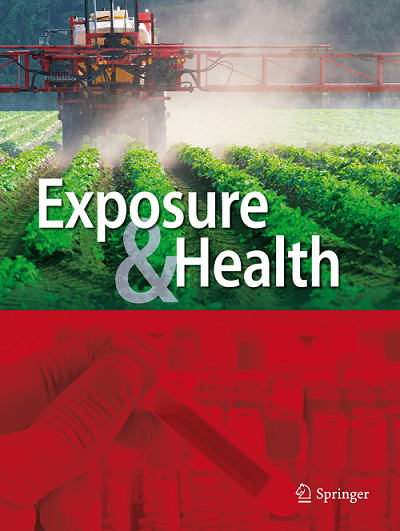霉菌毒素生物标志物在人体暴露体健康研究生物监测中的应用:过去、现在和未来
IF 4.6
3区 环境科学与生态学
Q1 WATER RESOURCES
引用次数: 0
摘要
本出版物回顾了母乳、血浆、血清和全血样本中真菌毒素生物标志物的最新人类生物监测(HBM),重点是过去二十年(2000-2011年和2011-2021年)。本文从三个方面进行了分析和总结:(a)检测到的生物标志物及其水平,(b)开发和使用的分析方法,以及(c)暴露概念和组学工具的意义。从文献综述来看,人类母乳、血浆和血清中的黄曲霉毒素(AFs)和赭曲霉毒素A (OTA)是HBM研究最广泛的真菌毒素生物标志物。在分析方法方面,观察到同时测定多种真菌毒素的质谱法的发展和实施明显增加。为此,液相色谱(LC)方法的使用,特别是当与串联质谱(MS/MS)或高分辨率质谱(HRMS)相结合时,已经大大增加,现在是首选的方法。在所审查的文献中,对各种真菌毒素进行分析的样品中,发现含有生物标记物的比例很高,这表明目标人群中有针对性的采样和人类对真菌毒素的高水平暴露相结合。此外,大多数HBM调查只检查在特定时期暴露于一种或几种真菌毒素。人类接触研究作为流行病学研究的一部分,通过发现作为环境对人类健康影响的潜在指标存在的新的生物标志物,对接触进行更广泛的评估。然而,需要制定分析方法验证的指南,以及建立人类生物体液中检测到的生物标志物水平与霉菌毒素摄入量之间关系的算法。本文章由计算机程序翻译,如有差异,请以英文原文为准。
Applications of Mycotoxin Biomarkers in Human Biomonitoring for Exposome-Health Studies: Past, Present, and Future
Abstract This publication reviews the state-of-the-art human biological monitoring (HBM) of mycotoxin biomarkers in breast milk, plasma, serum, and whole blood samples with a focus on the past two decades (2000–2011 and 2011–2021). Three aspects have been analyzed and summarized: (a) the biomarkers detected and their levels found, (b) the analytical methodologies developed and employed, and (c) the exposome concept and the significance of omics tools. From the literature reviewed, aflatoxins (AFs) and ochratoxin A (OTA) in human breast milk, plasma and serum were the most widely studied mycotoxin biomarkers for HBM. Regarding analytical methodologies, a clear increase in the development and implementation of mass spectrometry methods for simultaneous determination of multiple mycotoxins was observed. For this purpose, use of liquid chromatography (LC) methodologies, especially when coupled with tandem mass spectrometry (MS/MS) or high-resolution mass spectrometry (HRMS) has grown substantially and are now the methods of choice. A high percentage of the samples analyzed for various mycotoxins in the literature reviewed were found to contain biomarkers, demonstrating a combination of targeted sampling and high levels of human exposure to mycotoxins within the target populations. Also, most HBM investigations only examined exposure to one or a few mycotoxins at a given period. Human exposome studies undertake a wider evaluation of the exposure as part of epidemiological studies through the discovery of novel biomarkers that exist as potential indicators of environmental influences on human health. However, guidelines are required for analytical method validation, as well as algorithms to establish the relationship between the levels of biomarkers detected in human biofluids and mycotoxin intake.
求助全文
通过发布文献求助,成功后即可免费获取论文全文。
去求助
来源期刊

Exposure and Health
Environmental Science-Pollution
CiteScore
13.80
自引率
9.00%
发文量
71
期刊介绍:
It is a multidisciplinary journal focused on global human health consequences of exposure to water pollution in natural and engineered environments. The journal provides a unique platform for scientists in this field to exchange ideas and share information on research for the solution of health effects of exposure to water pollution.
Coverage encompasses Engineering sciences; Biogeochemical sciences; Health sciences; Exposure analysis and Epidemiology; Social sciences and public policy; Mathematical, numerical and statistical methods; Experimental, data collection and data analysis methods and more.
Research topics include local, regional and global water pollution, exposure and health problems; health risk analysis of water pollution, methods of quantification and analysis of risk under uncertainty; aquatic biogeochemical processes in natural and engineered systems and health effects; analysis of pollution, exposure and health data; and more.
 求助内容:
求助内容: 应助结果提醒方式:
应助结果提醒方式:


